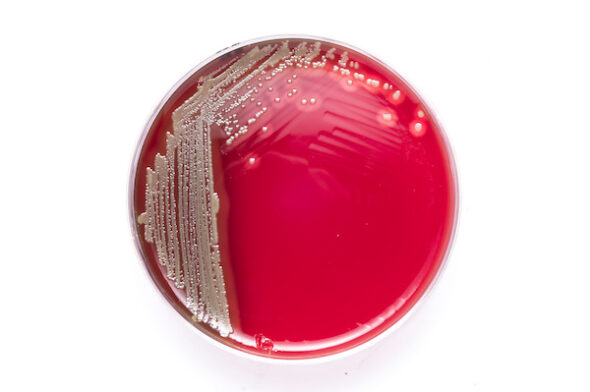Multi-omics approach unlocks discovery of natural products from bacteria
Many of today’s most useful drugs were originally discovered in the natural world. After Alexander Fleming famously discovered penicillin in a moldy petri dish, scientists probed the microbial world of bacteria and fungi for new disease-fighting compounds, as well as products useful in agriculture and industry.
But the laboratory screening process for finding natural products in bacteria is slow and struggles to find novel compounds. In a new paper published by the Proceedings of the National Academy of Sciences, a team led by Alessandra Eustaquio of the UIC College of Pharmacy describes a powerful new combination of approaches.
“Traditional pipelines for natural product discovery tend to rediscover compounds that we already know,” said Eustaquio, an associate professor of pharmaceutical sciences. “My lab is interested in using genomics to identify and predict what natural products bacteria should be able to make and then using genetic methods to try to obtain the compound.”
Multi-omics is the combination of genomic data with data on other biological systems, such as gene transcripts or proteins present in cells. Eustaquio’s paper applies a multi-omics approach to a strain of Burkholderia, a bacterial species found in soil. Scientists at Pfizer — where Eustaquio previously worked — used the bacterium to produce an antitumor agent called spliceostatin, currently in preclinical studies. But the fully sequenced genome of Burkholderia suggests it has genes to make as many as 28 additional compounds with potential human uses, Eustaquio said.
Her laboratory utilized metabolomics data to determine which of these products were made in detectable quantities by Burkholderia. They found antifungal and anticancer compounds previously detected in other bacteria, and identified a new product in collaboration with chemist Roger Linington at Simon Fraser University that they named selethramide, a peptide that helps the bacteria move. While preliminary tests showed some antibiotic activity, the true applications of this new product will require more investigation.
“One of the pros of finding antibiotics through traditional screening is that you only find what you’re interested in,” Eustaquio said. “But you’re always starting the other way around with genomes, where it’s more difficult to predict what the activity of that natural product will be.”
The multi-omics approach also enables Eustaquio’s group to study how Burkholderia could be used as a vehicle for synthetic biology and the large-scale production of natural products.
“My motivation is to understand the bacteria and develop tools to engineer it,” Eustaquio said. “What we’re trying to do now is to develop Burkholderia as a host organism, or what people call a synthetic biology chassis, where we can find genes of interest in other bacteria, transfer those genes into our host and have it make products of interest.”
The study involved graduate students Sylvia Kunakom and Sean Romanowski and postdoc Bruno Paulo at UIC, and postdoc Sanghoon Lee and graduate students Michael Recchia, Dennis Liu and Hannah Cavanagh at Simon Fraser.

